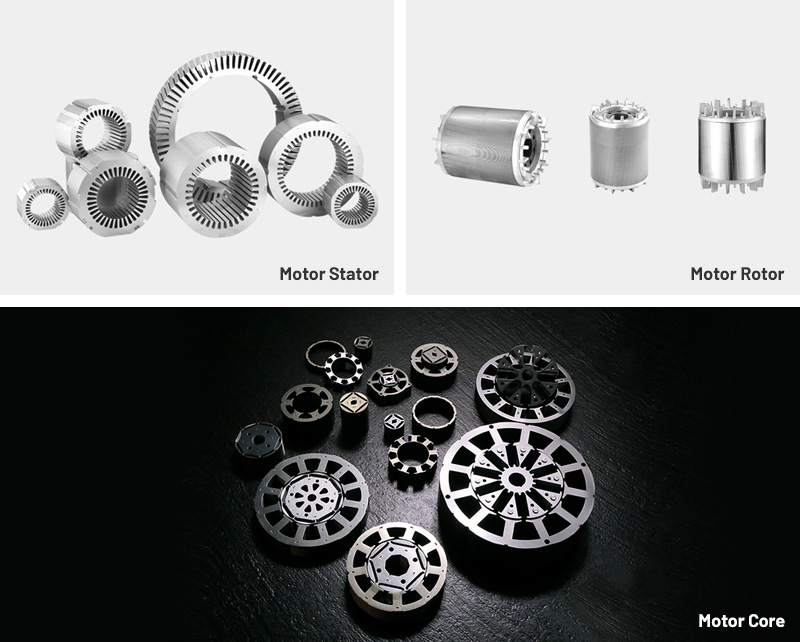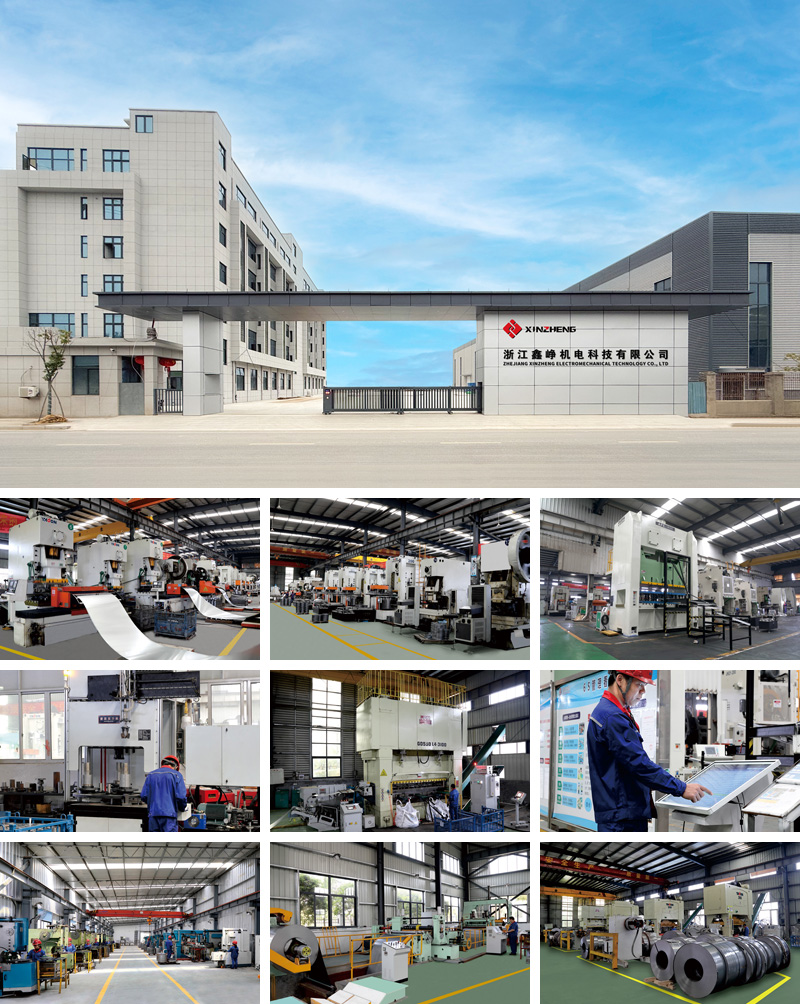Explosion-proof motors are critical in hazardous environments such as oil and gas, chemical processing, mining, and grain handling, where flammable gases, vapors, or dust are present. The stator, as a core component of these motors, plays a pivotal role in ensuring both operational efficiency and safety. Explosion-proof motor stator laminations are engineered to guide magnetic flux while minimizing energy losses and preventing ignition risks.
With increasing global industrial automation and stringent safety regulations such as ATEX and IECEx, demand for high-performance, reliable explosion-proof stator laminations continues to grow. Industries require laminations that maintain efficiency, withstand harsh environments, and ensure long-term operational safety under continuous duty cycles.
Stator laminations provide the path for magnetic flux in the motor core. In explosion-proof motors, precise lamination design ensures uniform flux distribution, minimizing torque ripple and improving motor efficiency. Even minor deviations in lamination geometry can affect flux distribution, impacting performance and potentially increasing heat generation.
High-quality laminations are made from insulated electrical steel sheets to interrupt eddy currents. This design reduces core losses, lowers operating temperatures, and ensures stable motor operation in hazardous areas. Minimizing hysteresis losses further enhances efficiency and prevents excessive heat, which is critical to avoiding ignition in flammable atmospheres.
Explosion-proof motors often operate continuously at high loads. Laminations must withstand thermal expansion and mechanical stress without warping or cracking. Maintaining dimensional integrity ensures proper rotor-stator alignment and reduces vibration, which contributes to both motor efficiency and safety.
Electrical steel is the preferred material for explosion-proof stator laminations due to its:
High magnetic permeability and low core loss
Thermal stability under prolonged operation
Mechanical strength to resist deformation under load
Insulating properties to prevent interlaminar short circuits
Typical lamination thickness ranges from 0.35 mm to 0.50 mm, balancing eddy-current reduction with structural stability.
The stator slots are designed for optimal winding accommodation, heat dissipation, and minimal vibration. Precision slot geometry ensures uniform magnetic flux and reduces hotspots, which is essential for maintaining safety in explosive environments.
High-quality laminations are produced through precision stamping or laser cutting. Tight tolerances and smooth edges prevent insulation damage and maintain uniform magnetic properties. Accurate cutting is critical in explosion-proof designs, where even minor defects can compromise motor safety and performance.
Laminations are stacked using adhesive bonding, interlocking, or welding techniques. Proper stacking reduces vibration, maintains alignment, and ensures consistent mechanical and electrical performance. Insulation coatings between laminations enhance eddy-current suppression and thermal management.
Each lamination is coated with high-temperature, non-flammable insulating layers. This insulation prevents short circuits, reduces energy loss, and maintains safe operation in hazardous areas. The choice of coating material affects thermal endurance, adhesion, and chemical resistance.
Material Consistency: Variations in steel composition can increase core loss and reduce efficiency.
Dimensional Precision: Deviations in lamination thickness or slot geometry impact flux distribution and motor balance.
Insulation Quality: Uneven coatings can increase eddy currents or cause insulation failure.
Stacking Accuracy: Misaligned laminations increase vibration, noise, and risk of electrical faults.
Tooling Condition: Worn dies or poor cutting tools can damage lamination edges and compromise safety.
Strict quality control is essential to meet both performance and explosion-proof safety standards.
Selecting a reliable lamination supplier is critical for explosion-proof motor production:
Material Certification: Verification of electrical steel grade and magnetic properties
Precision Manufacturing Capability: Ability to produce laminations within tight tolerances
Quality Assurance Systems: Core loss testing, dimensional inspection, and coating verification
Regulatory Compliance: Suppliers must adhere to ATEX, IECEx, or other relevant standards
Production Stability: Consistent supply ensures uninterrupted motor assembly and delivery
A robust supply chain minimizes production risks and supports high-performance motor operation in hazardous environments.
Despite technological advancements, manufacturers face several challenges:
Material Cost Volatility: Electrical steel prices fluctuate, affecting production budgets
Die Wear and Burr Formation: Can damage insulation or reduce dimensional accuracy
Thermal Stress: Continuous high-load operation can degrade insulation or material properties
Rotor-Stator Alignment: Misalignment increases vibration, noise, and energy loss
Compliance Requirements: Explosion-proof motors must meet strict safety and efficiency standards, leaving minimal margin for errors
Mitigating these issues requires precise tooling, high-quality materials, and rigorous process controls.
Explosion-proof motor stator laminations are essential in:
Oil and Gas: Pumps, compressors, and conveyors in refineries and drilling operations
Chemical Processing: Motors driving agitators, mixers, and transfer systems in flammable environments
Mining: Motors for ventilation, hoists, and crushers in dust-prone areas
Grain Handling: Motors in silos, conveyors, and elevators to prevent ignition of combustible dust
High-quality laminations ensure motor efficiency, reduce maintenance, and maintain compliance with safety regulations in these critical applications.
Low-loss, high-permeability steel reduces core losses, improves efficiency, and supports compact rotor designs suitable for explosion-proof motors.
Non-flammable, high-temperature coatings improve thermal endurance and provide chemical resistance, extending motor life and safety.
Laser cutting and advanced stamping techniques improve dimensional accuracy, reduce vibration, and optimize magnetic performance.
Digital inspection and real-time monitoring of lamination quality reduce defects, enhance production efficiency, and ensure compliance with explosion-proof standards.
Recycling steel, reducing waste, and using environmentally friendly coatings are increasingly integrated into lamination production to meet corporate sustainability goals.
Q1: How do lamination materials affect explosion-proof motor safety?
High-quality electrical steel with uniform insulation reduces energy losses, heat generation, and ignition risks.
Q2: What is the typical lamination thickness?
Thickness generally ranges from 0.35 mm to 0.50 mm depending on motor size and operational requirements.
Q3: Why is insulation critical for explosion-proof laminations?
Proper insulation prevents interlaminar shorts, reduces eddy currents, and maintains safe operation in flammable atmospheres.
Q4: Can these laminations withstand continuous high-load operation?
Yes, with precision stacking, high-quality insulation, and robust materials, laminations maintain mechanical and thermal integrity.
Product Category

Comprehensive Strength


Copyright © Zhejiang Xinzheng Electromechanical Technology Co., Ltd. All Rights Reserved.
This website uses cookies to ensure you get the best experience on our website.